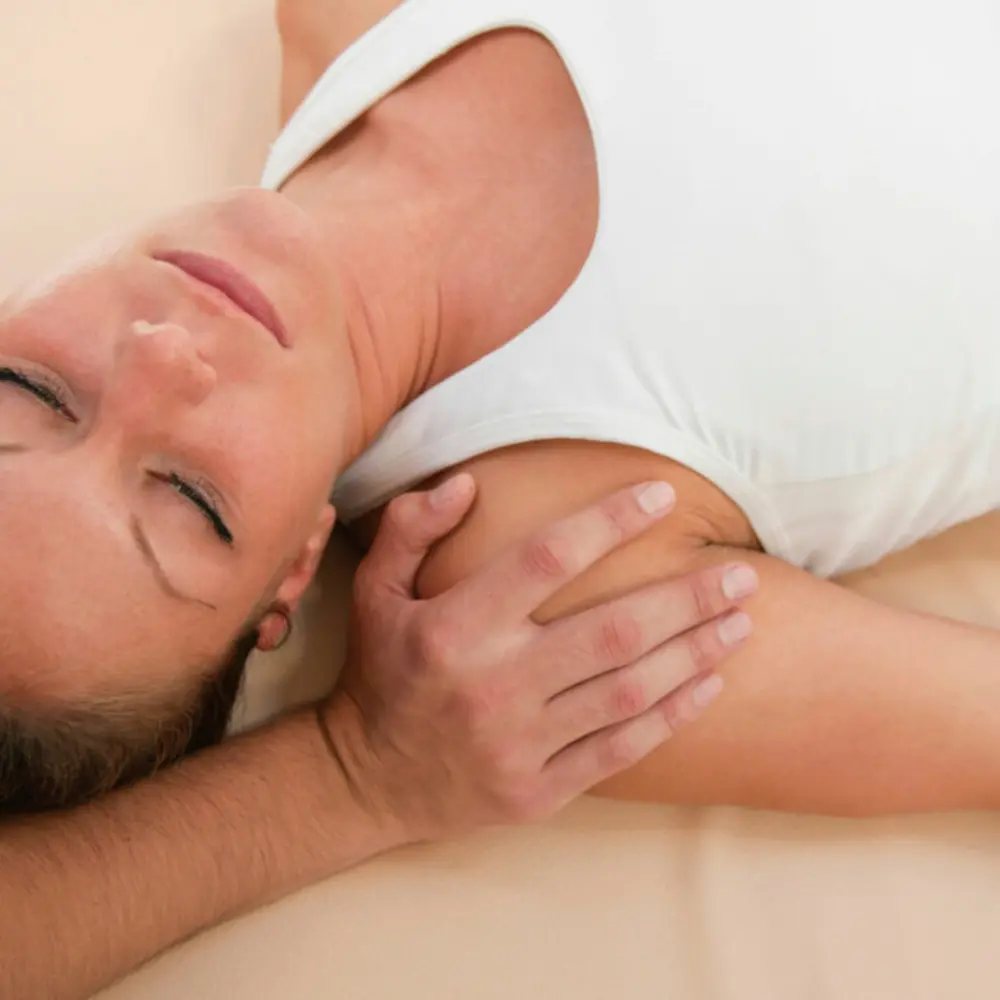
47 – Taking care of your nervous system using Massage Therapy with Rebecca Froese
- Safe Harbour Therapy Centre
Subscribe: Apple Podcasts | Google Podcasts
What is dermoneuromodulation?
It’s simpler than it sounds! Let’s break down the word: “dermo” means skin. “Neuro” refers to your nervous system. And “modulation” means change. So dermoneuromodulation, or DNM, means contacting the skin and stimulating the nervous system to create change. All manual therapy involves the skin and the nervous system by default. DNM is less a specific set of techniques and more an explanatory framework that incorporates anatomy, pain science, and a biopsychosocial model of health – that is, a model that includes many different factors when assessing someone’s condition and experience of pain. There are some guiding principles to a DNM treatment – slow and gentle techniques are prioritized, the focus is on comfort and relief, and the target tissue is the nervous system rather than the muscular system.
Pretty much any complaint that would lead you to seek out massage therapy could be approached with a DNM framework. If you have pain, discomfort, or limited movement that is unrelated to an injury, or has remained after an injury has healed, DNM could help you get back to a freely-moving, comfortable space. Chronic stiffness or soreness anywhere in your body, from your head to your toes, can be treated with a DNM approach.
Compared to a typical Swedish massage, DNM has a few main differences – there is no oil or lotion used, the approach prioritizes lighter pressure and a gentler touch, there may be different positions involved, for example laying on your side or having your arm or leg supported off of the table, and there may be some movement required. For that reason, because there’s more movement involved, clients can wear shorts and a tanktop for greater comfort, as opposed to a more typical massage where most people undress and are covered by a sheet and blanket during the treatment. It should be said that any treatment you receive should be within your comfort level – it’s totally possible to receive a massage through a layer of clothing if that feels safer and more accessible for you.
The DNM framework can also be incorporated into a regular massage therapy appointment, and that is often the approach that I take.
The DNM framework is based on anatomy, pain science, and a biopsychosocial model of health. Pain is a complex experience, which can be influenced by many different factors, including social and relational factors. So first and foremost it is important to find a manual therapist that you can build a trusting therapeutic relationship with. Once an environment of trust and safety has been developed, usually through a conversational “check-in” at the beginning of a massage therapy appointment, manual therapists can take advantage of both the sensory and mechanical properties of the skin and nervous system to facilitate change in the experience of pain or discomfort.
Your skin is your first line of defense against infection and injury, and is the organ through which you interact physically with your environment – when you touch and are touched, it is your skin that is contacting another surface. Woven through the structure of your skin are cutaneous sensory nerves, which allow you to experience touch, pressure, vibration, temperature, stretch, pain and itch. All of this information is sent to your brain and spinal cord, which then instruct your body on how to respond appropriately to the sensation. So as you can imagine, and as you have probably experienced for yourself unless you are very very lucky, when your brain interprets sensory information as pain, you pay attention to the painful area and defend yourself by tensing muscles and holding a stiff posture to prevent potential damage. A lot of the time, this is a really useful and appropriate response. When you have an injury, it makes sense to maintain a defensive posture until the injury has healed. But what do you do when you keep experiencing pain after healing has occurred, or if you never had an acute injury in the first place and your pain is related to stress or postural habit?
Touch and movement provide new information to your nervous system, which can help to “reset” patterns of tension and even interpretation of sensation. Movement and positioning can also mechanically “unload” tension on nerves, reducing compression and encouraging mobility. According to DNM, a lot of pain can be attributed to tunnel syndromes, which occur when nerves are compressed as they move past and through other tissues in the body – the best-known example is probably carpal tunnel syndrome, which causes pain in the forearm, wrist, and hand.
DNM was developed by Diane Jacobs, a Canadian physiotherapist. She writes extensively on the treatment of pain by manual therapy, and teaches workshops internationally. You can learn more about DNM by following the link below:
http://www.dermoneuromodulation.com/
Research on massage therapy in general is limited, but a few new studies have shown promising results for DNM in pain reduction:
http://repository-tnmgrmu.ac.in/11532/?fbclid=IwAR39w9BBZDtOD0xQSwNw6IsJlfLG4KdBoAQdzy9AU2B6P282pAOq2dXxH6E
http://repository-tnmgrmu.ac.in/11478/?fbclid=IwAR3Flv3L2pBo9pmNNWNh0zmUUZOIgzM71PQa8GfguiBAmobdk7oTS6gu_LU
https://link.springer.com/article/10.1007/s00337-019-00632-x
If this approach is something you’d like to try, please reach out to Rebecca via the Safe Harbour website and book an appointment today!
